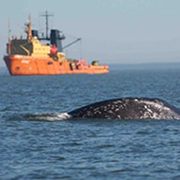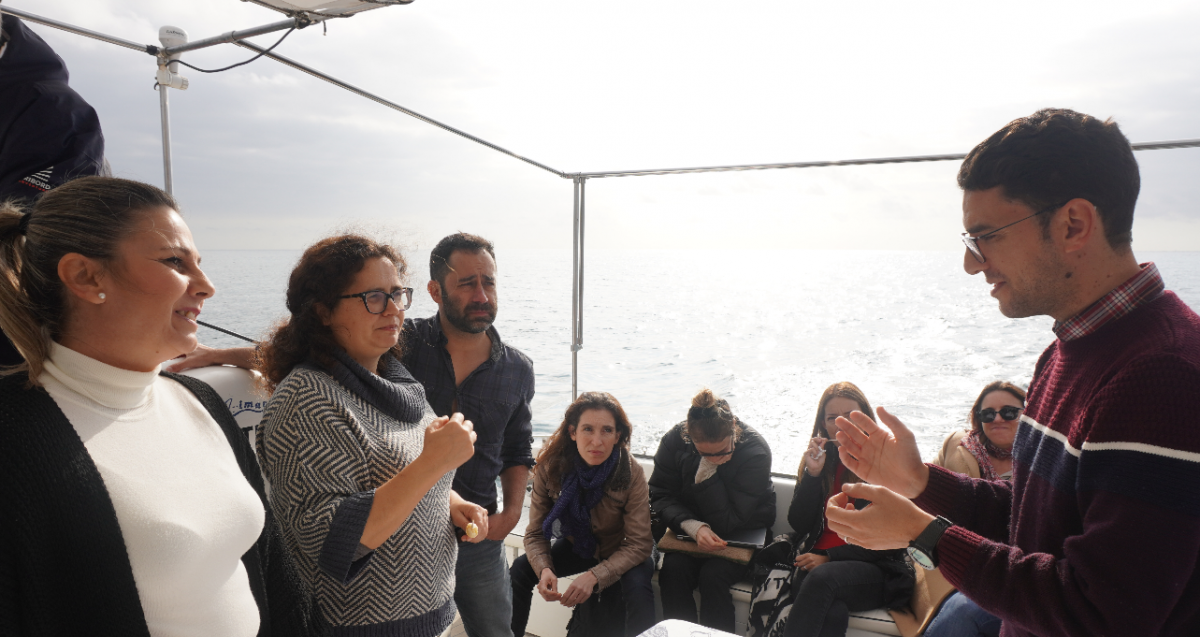New scientific panel to keep the finger on the pulse of the endangered Western Gray Whale
The World Conservation Union (IUCN) convenes a new independent scientific advisory panel to monitor the impact of the Sakhalin II offshore oil and gas development on critically endangered Western Gray Whale population
LINKS:
- Questions and Answers (English)
- Questions and Answers (Russian)
- Picture Gallery
- More information on new advisory panel
- Final Report of the Previous Panel

Photo: Dave Weller
Gland, Switzerland, 2 October 2006 (IUCN) – Ten prominent international scientists will monitor the status of the critically endangered Western Gray Whale population in the Northwest Pacific and provide ongoing independent advice to a consortium of companies developing oil and gas reserves in the whale’s summer feeding grounds, off Sakhalin Island in the Russian Far East.
The new long-term Western Gray Whale Advisory Panel, convened by the World Conservation Union (IUCN) brings together independent scientific expertise to inform the decisions of oil and gas companies operating in the marine waters off Sakhalin Island and other interested stakeholders. In particular, the Panel will focus on the Sakhalin II oil and gas project being developed by Sakhalin Energy Investment Company Limited (Sakhalin Energy) and due to commence in spring 2007. Sakhalin Energy is a consortium of companies including Royal Dutch Shell and Japanese companies Mitsui and Mitsubishi Corporation.
The World Conservation Union is convening the Panel in response to the findings of an independent report, published in 2005, on the impacts of the Sakhalin II project on the whale population and following consultation with the oil industry and the conservation community.
“This Panel will help to incorporate long-term scientific findings into the design and management of oil and gas operations in the region, thereby contributing to the conservation and recovery of one of the world’s critically endangered giants,” said Carl Gustaf Lundin, Head of the IUCN Global Marine Programme.
Western Gray Whales are listed as critically endangered on the IUCN Red List of Threatened Species. Thought to be extinct as recently as 1972, this remnant subpopulation living in the north-western Pacific Ocean includes only 20-25 reproductively active females. Its only known feeding grounds lie along the coast of Sakhalin Island where existing and planned large-scale gas and oil activities represent a potentially serious threat to the population’s survival.
“The Panel is a vehicle to provide useful scientific information and recommendations for the ongoing protection of the Western Gray Whale population, supporting industry best practice into the future and giving greater security to the companies involved. It puts non-governmental organizations, scientific institutions and the private sector on a level playing field, providing relevant, timely and accurate scientific knowledge to help each party make well-informed decisions, in the best interest of all,” said Ibrahim Thiaw, Acting Director General of IUCN.
The Panel is established for a period of five years and will hold the first of a series of regular meetings in Switzerland from 9-11 November 2006. Panel members come from Canada , Russia , the United Kingdom , Germany and the United States.
*** ENDS ***
Notes to editors
For more information or to set up interviews, please contact:
- Julian Roberts, IUCN Marine Programme Officer, Tel. +41 22 999 0291; Fax +41 22 999 0025;julian.roberts@iucn.org,
- Carolin Wahnbaeck, IUCN Media Relations Officer, Tel: +41 22 999 0127; Fax: +41 22 999 0020; carolin.wahnbaeck@iucn.org ; +41.79.417.4049
Photos : Gray Whale Picture Gallery
About the World Conservation Union (IUCN)
Created in 1948, the World Conservation Union (IUCN) brings together 81 States, 120 government agencies, 800 plus NGOs, and some 10,000 scientists and experts from 181 countries in a unique worldwide partnership. The Union ’s mission is to influence, encourage and assist societies throughout the world to conserve the integrity and diversity of nature and to ensure that any use of natural resources is equitable and ecologically sustainable.
The Union is the world's largest environmental knowledge network and has helped over 75 countries to prepare and implement national conservation and biodiversity strategies. The Union is a multicultural, multilingual organization with 1,000 staff located in 62 countries. Its headquarters are in Gland , Switzerland .



